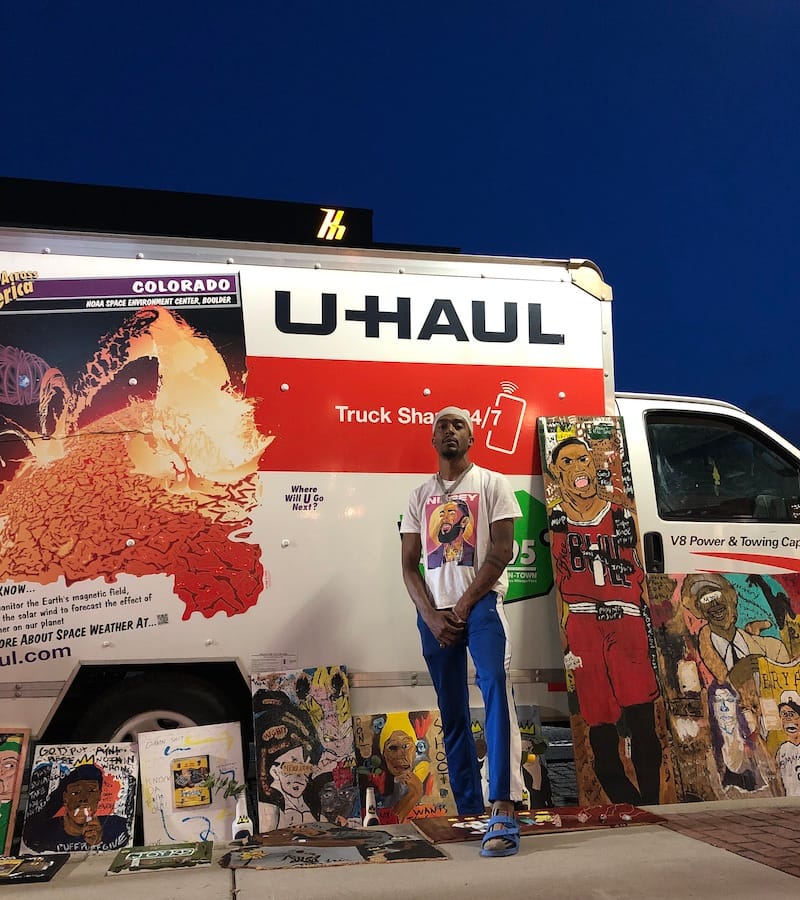Movement as Recovery
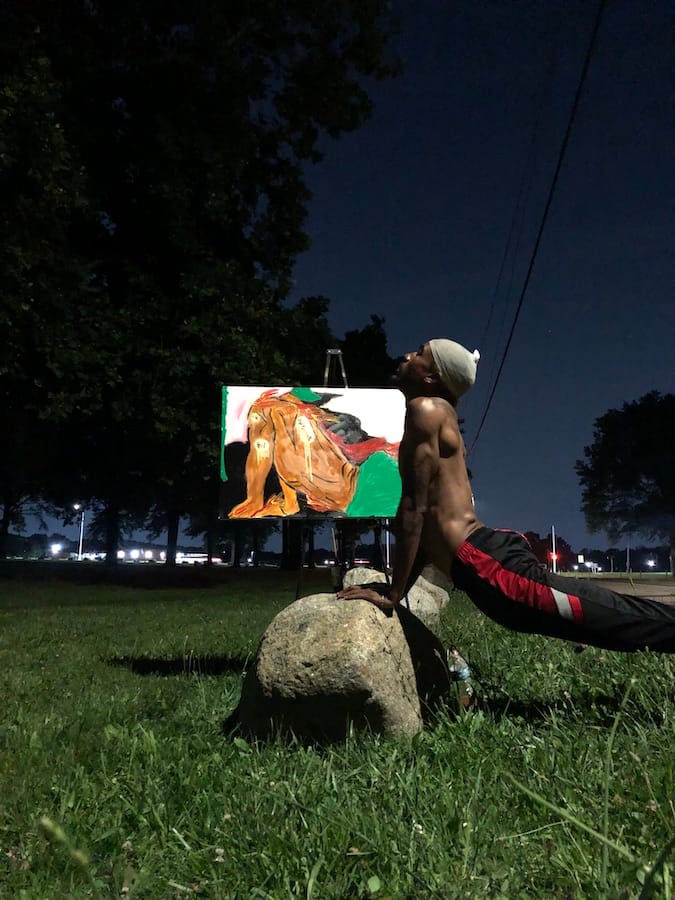
Witnessing a fire that destroys nearly all you have is not a one-day event. Since the Chicago fire of May 9, artist Courtney Jolliff has been living through that trauma the way he knows how: doing body work to appreciate the integrity of his survival while creating new art.
Some of that art is quite explicitly a response to the trauma. Shortly after the fire, he painted “From the Ashes Rose a Phoenix,” a work that was quickly purchased and is now housed in a private collection.
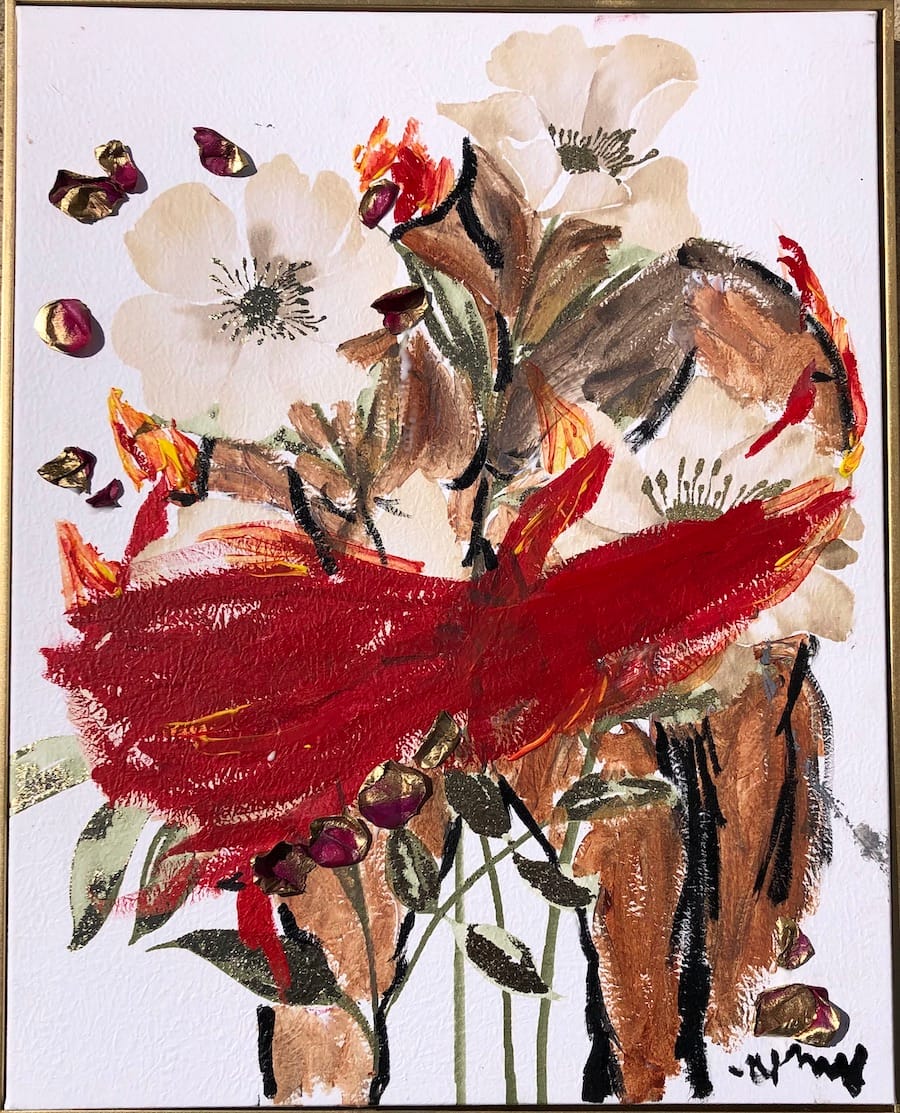
But since then, two more "Phoenix" works have been produced by Courtney, creating a “From the Ashes” series of three to date.
The two most recent explicitly reference contortions Courtney has undertaken, contortions of anatomy that evoke not only the Eastern practices of formal yoga but also the Western history of the brutality survived by Black men like him. (The works echo Courtney's earlier series on American enslavement.)
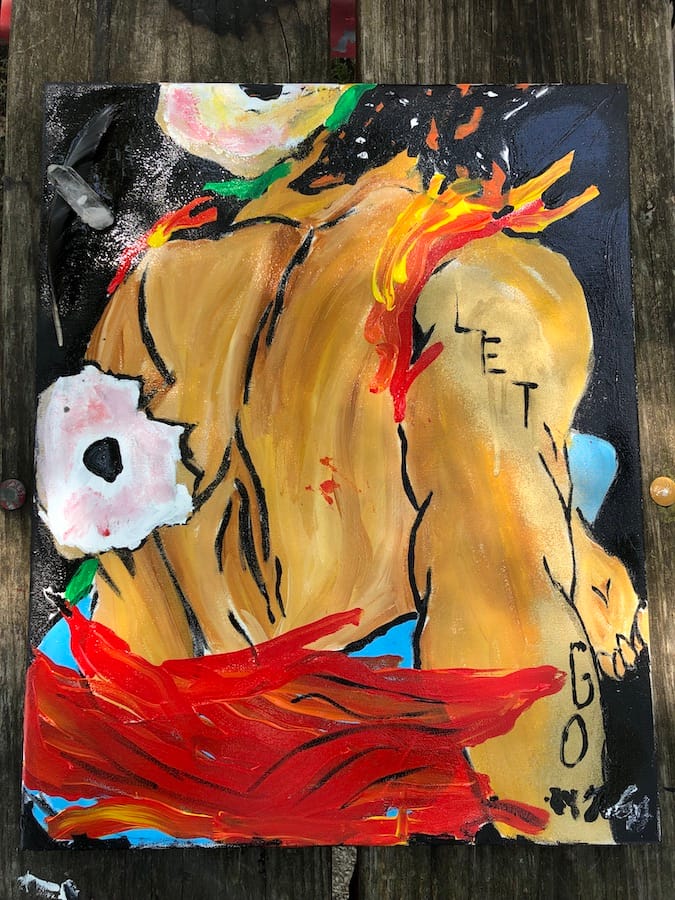
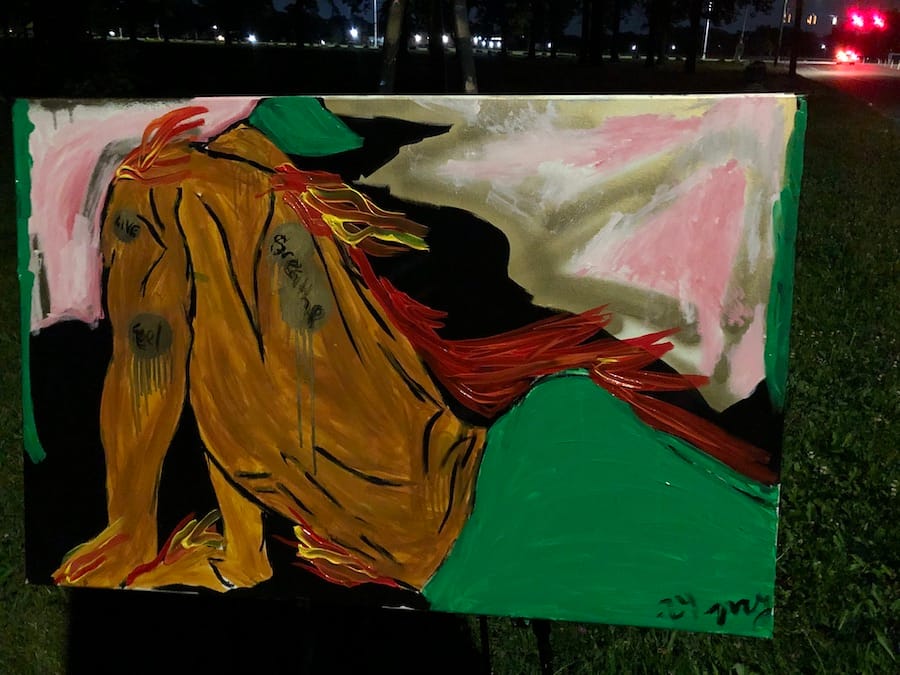
“I had to breathe through my experience,” Courtney explains.
The breathing of the exercise helps to exorcize the smoke of the fire.
Even before the fire, Courtney had intended to move to his original home of Detroit, to capture that city in paint the way he has Chicago for the last two years.
But the move has been made more complex by the losses from the fire.
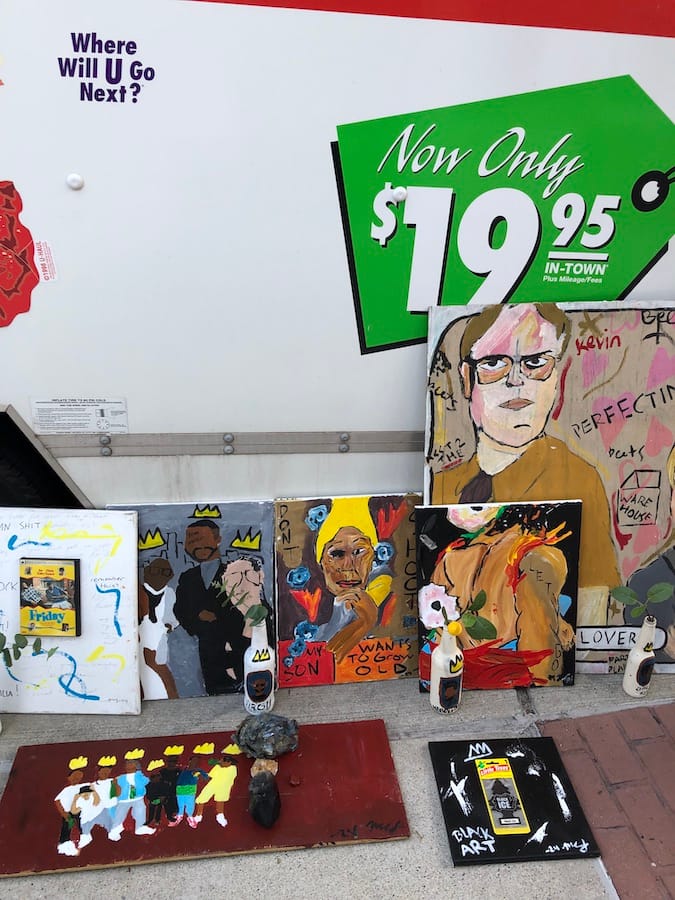
Still, painting is a way to channel the intense emotions of this movement.
“I found my unique style after two years” of painting, Courtney says. “And that was shown when I set up in Royal Oak, Michigan, and people told me they’ve never seen art like this.”
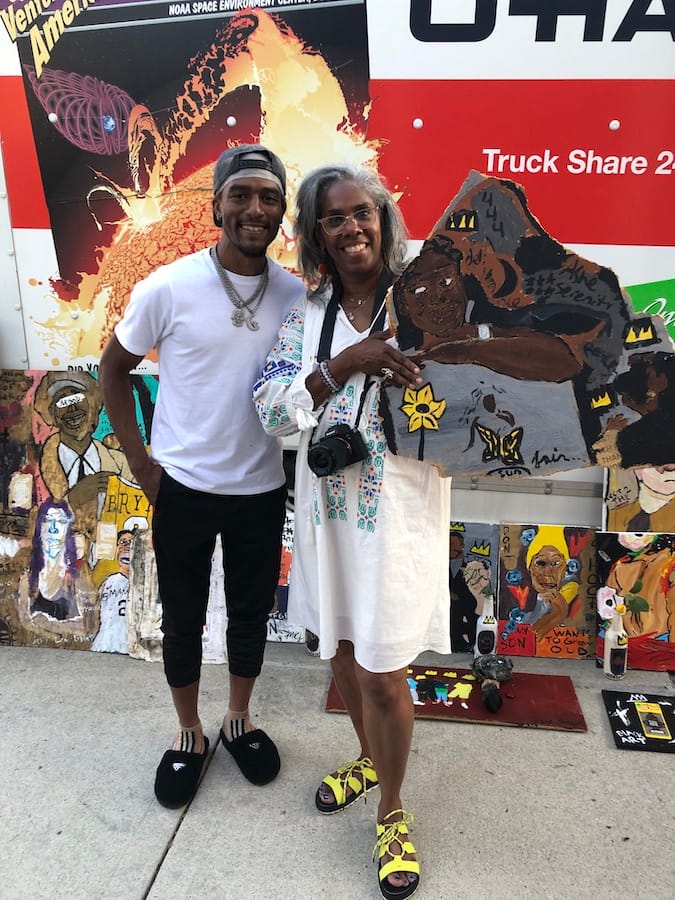
Courtney’s approach is to incorporate his work as a storyteller into the art, to draw from his experiences as a filmmaker as he works in a recollection of a more ancient media – paint on found objects.
To find a welcome in Royal Oak as he has in Hyde Park is to know that his paintings will continue to listen, to speak, to connect person to person.
Before leaving Chicago, Courtney exhibited his work by invitation at the Black Boy Art Show. Two years earlier, he had attended the show with Raub Welch, his mentor, and beheld what other artists had created.
This year, he was called to provide art. But he did so in his unique way, always wrapping oral histories – stories of the creations – around the works.
“One of my core arts is storytelling,” he said, recalling the show, “and I also wanted to stay true to being a street artist. My art is normally laying on the curb, laying on the street, so I appreciated that at the show my art looked as if it was a piece of nature growing from the concrete ground in the gallery.”
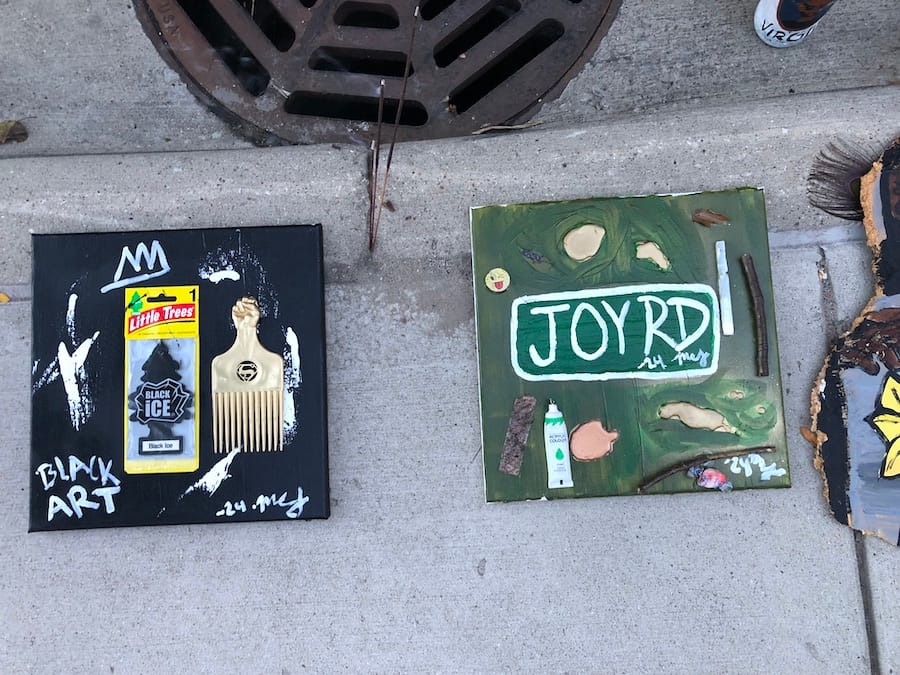
He told the stories of the art, the fire, the burn to create art, the flames that destroyed art.
Soon, he had sold the first painting he made of Nipsy after the fire to a young man. Then he sold four paintings to one collector, including one of the Hyde Park Promontory Point paintings. Soon after, an invitation came to participate in an urban-nature artistic exploration in Chicago.
“I have more things to look forward to for sure, in the midst of adversity and chaos,” Courtney says. “I keep recreating paintings. I just feel again in my core a storyteller.”
